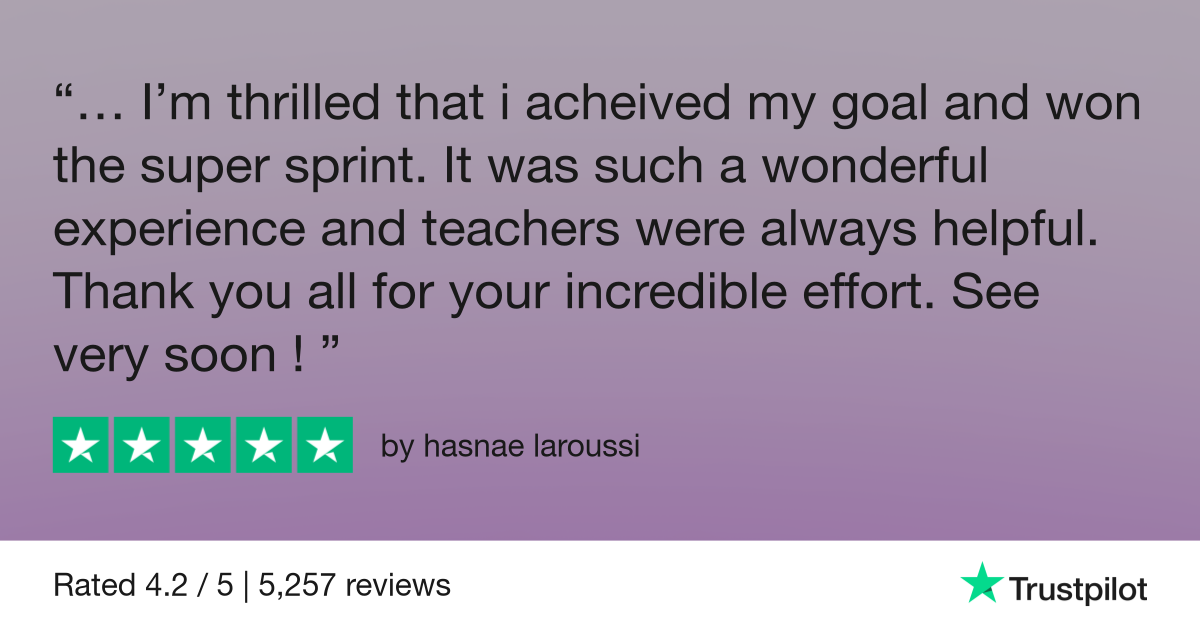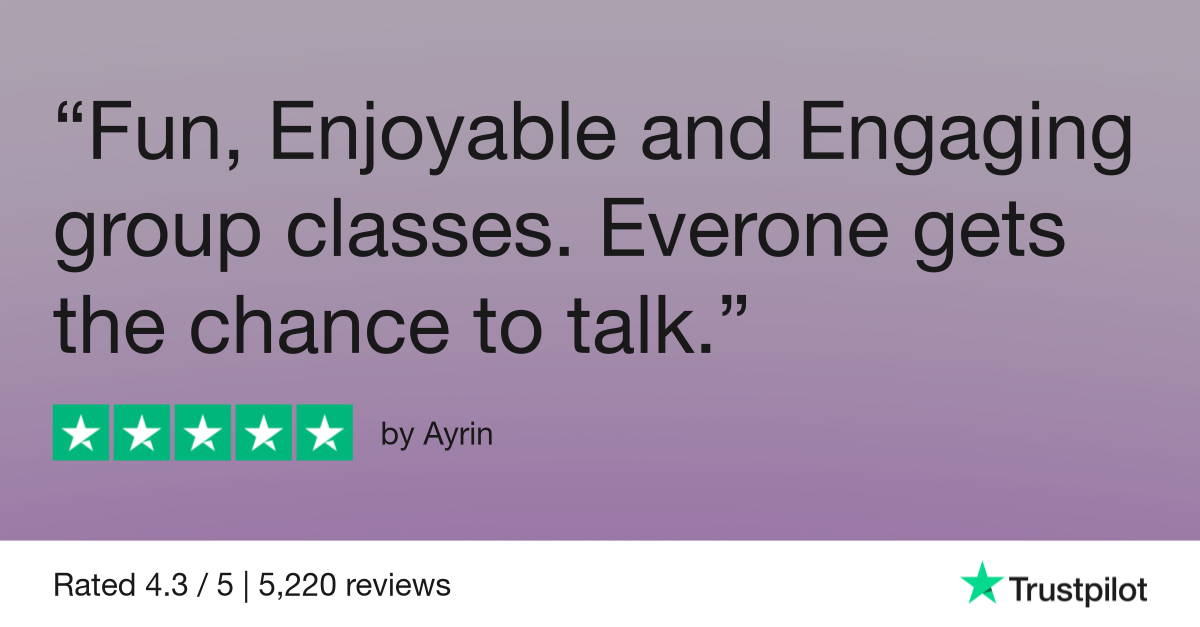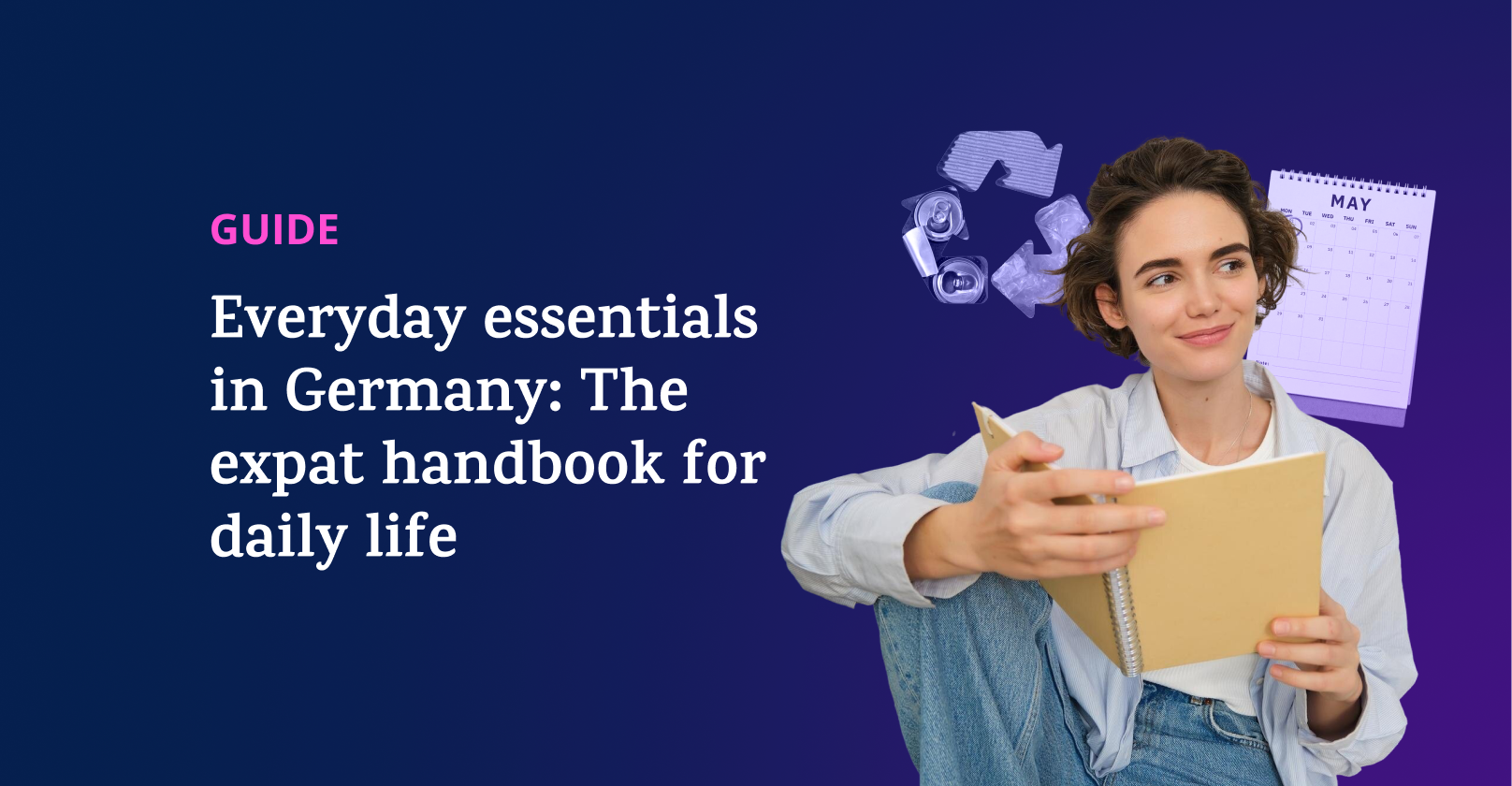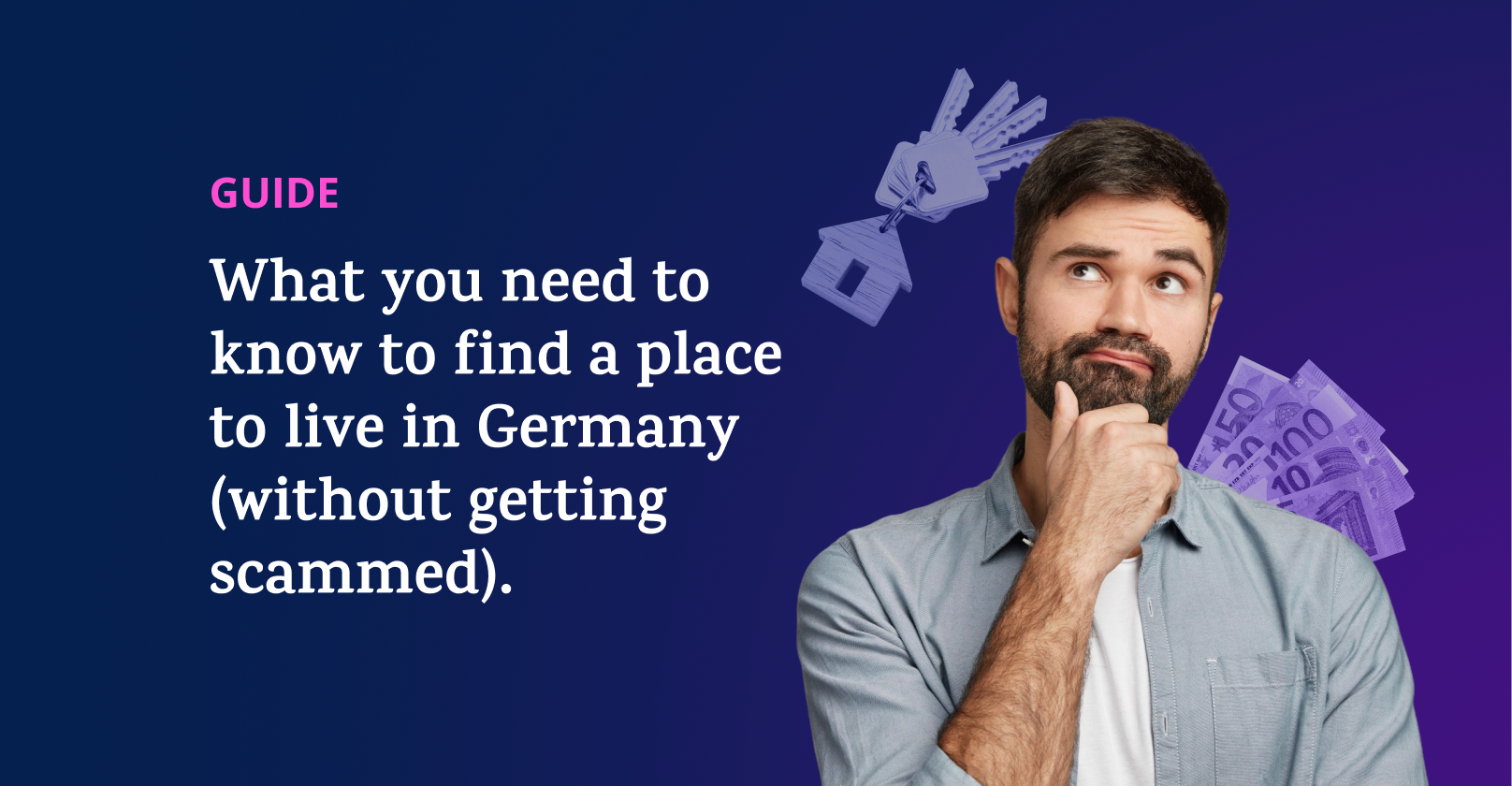How to form indirect questions in German
When you want to sound both clear and courteous in German, indirect questions can be a valuable tool. Rather than risking the rudeness of a too-sharp-sounding request, these questions offer a softer approach that splits the difference between precision and politeness.

Indirect questions are often delicately couched inside statements or paired with other questions. So, instead of asking, “Wo ist der Bahnhof?” (Where is the train station?), you might ask, “Können Sie mir sagen, wo der Bahnhof ist?”. It’s more or less the same question, but the indirect version is dressed up in an extra layer of nicety.
Because indirect questions are essential in formal and professional situations, understanding how to form them will seriously level up your spoken and written German. So, how do these elegant guys work? Let’s break it down.
- Direct vs. indirect questions
- Forming indirect questions in German
- Punctuation and syntax nuances
- Practical applications
- FAQs
Direct vs. indirect questions
Direct questions shoot straight from the hip. They typically take the form of a simple, plain statement followed by a question mark. To form a direct question in German, flip the word order so that the verb precedes the subject, like so:
- Wo wohnt sie? (Where does she live?)
Indirect questions, on the other hand, are more diplomatic. This requires some additional grammatical work, as indirect questions are generally tucked inside or paired with another clause — a polite request, statement or question about a question, for example:
- Kannst du mir sagen, wo sie wohnt? (Can you tell me where she lives?)
Here’s the main structural difference:
- In direct questions, the verb usually comes before the subject.
- In indirect questions, the verb goes to the end, like in a subordinate clause.

Learn German with Lingoda
How it works

Forming indirect questions in German
Indirect questions follow a clear logic — but when we’re dealing with German word order, even clear logic can seem puzzling at first! So, for the sake of clarity, we’ll break this down into manageable parts:
Structure and word order
In an indirect question, the question becomes part of a larger sentence. That means it behaves like a subordinate clause, and in German, that means the verb goes to the end. Compare the following two sentences, the first of which is a direct question and the second of which is an indirect version of that same question (albeit, one that’s disguised as a statement):
- Was machst du? (What are you doing?)
- Ich weiß nicht, was du machst. (I don’t know what you’re doing.)
The word order in the indirect question flips, because we’re embedding the question inside a statement.
Using ‘ob’ for yes/no questions
When an indirect question doesn't start with a question word but nonetheless demands a “yes” or “no” answer, German uses the word “ob” (whether/if), like so:
- Kommst du morgen? (Are you coming tomorrow?)
- Ich weiß nicht, ob du morgen kommst. (I don’t know if you’re coming tomorrow.)
Here, “ob” sets up the subordinate clause containing the indirect question. The verb (kommst) goes to the end, as it always does in subordinate clauses.
Using ‘W’ questions
For questions that start with words like wann (when), wo (where), wie (how) and warum (why), just plug the question word into the indirect sentence — and, again, move that verb to the end:
- Warum lernst du Deutsch? (Why are you learning German?)
- Er fragt, warum du Deutsch lernst. (He asks why you’re learning German.)
The recipe is straightforward:
“W” question word + subject + end verb = indirect question
Once you learn the pattern, you’ll start spotting indirect questions everywhere.
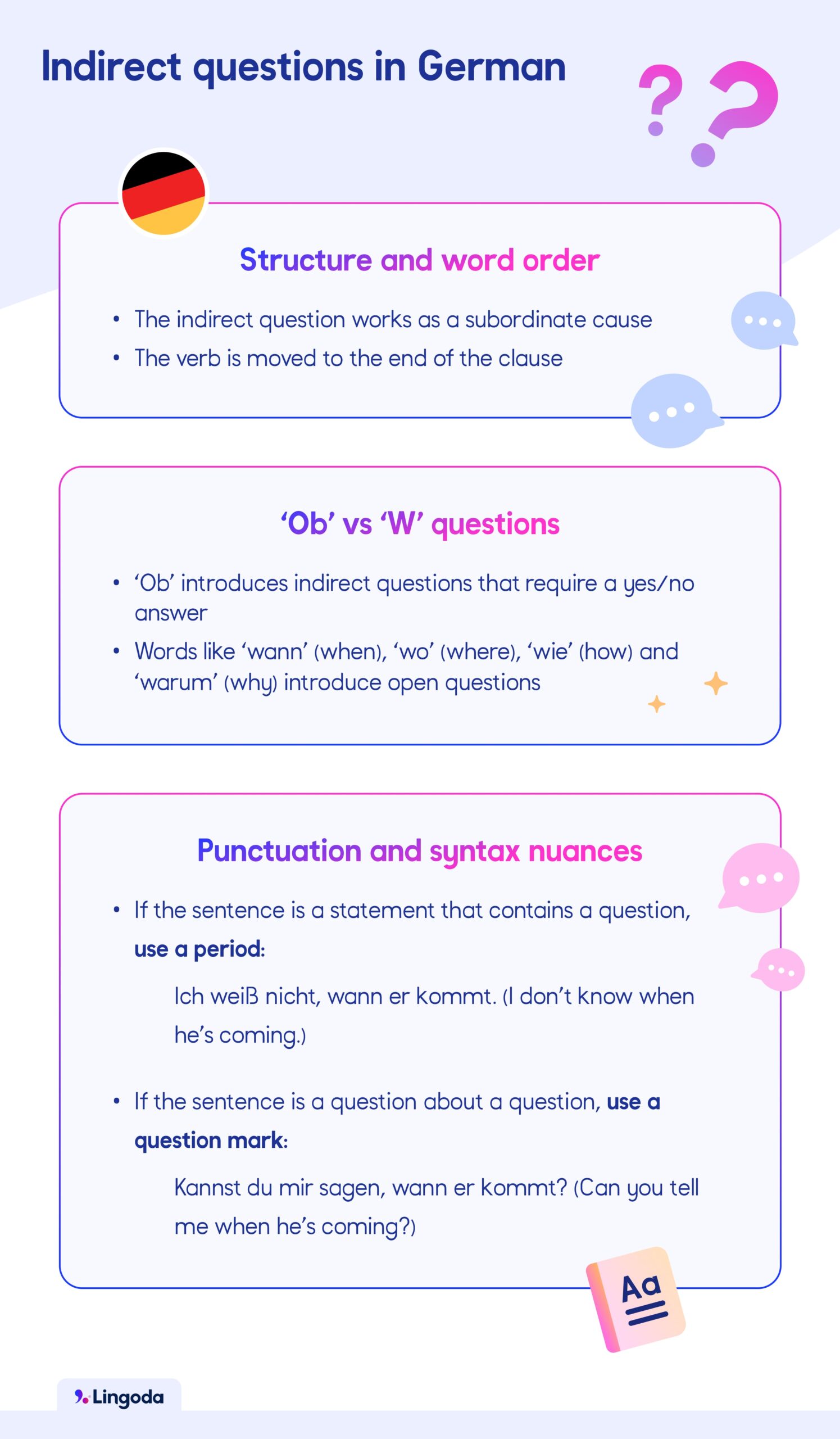
Punctuation and syntax nuances
As we’ve seen, indirect questions don’t always use question marks in German — though they’re still technically questions. The rule is simple:
- If the sentence is a statement that contains a question, use a period:
Ich weiß nicht, wann er kommt. (I don’t know when he’s coming.) - If the sentence is a question about a question, use a question mark:
Kannst du mir sagen, wann er kommt? (Can you tell me when he’s coming?)
It’s not about whether there's a question word in the sentence, but whether the whole sentence is functioning as a question or not.
Practical applications
Everyday conversations
Indirect questions help keep things friendly, polite or just a bit less in-your-face. You’ll hear them all the time in casual chats:
- Weißt du, wo mein Handy ist? (Do you know where my phone is?)
- Kannst du mir sagen, wie spät es ist? (Can you tell me what time it is?)
The indirect formulation is especially useful when you need to ask for help or information without sounding too direct.
Formal and written communication
In emails, job interviews or academic contexts, indirect questions are the standard for sounding respectful and professional:
- Ich würde gerne wissen, ob die Unterlagen vollständig sind. (I’d like to know if the documents are complete.)
- Könnten Sie mir mitteilen, wann das Besprechung stattfindet? (Could you let me know when the meeting is taking place?)
Using indirect questions in writing shows a solid grasp of tone — and makes you sound like a grown-up in the best way.
What is an indirect question in German?
An indirect question is a question embedded in a statement or another question, with the verb moved to the end of the subordinate clause.
How do you use ‘ob’ in German?
Use ob to introduce yes-or-no indirect questions, like: Ich weiß nicht, ob er kommt. (I don’t know if he is coming.)
Start using indirect questions with confidence
Indirect questions in German may look like a grammatical detour, but they’re actually a shortcut to sounding more natural, polite and fluent. We’ve looked at how they differ from direct questions, how to form them using ob and “W” question words, and where to place that ever-important verb. We’ve also seen how useful they are — whether you’re casually asking a friend to pass the salt or writing a professional email.
Mastering indirect questions isn’t about memorizing rules — it’s about practicing them in real conversations. That’s where learning German with Lingoda’s small group classes pays off. You’ll get live feedback, flexible scheduling and plenty of chances to ask how and why (indirectly or otherwise).
Ready to put your polite German into action? Go ask someone where the train station is — but do it like a pro.

Learn German with Lingoda
How it works


